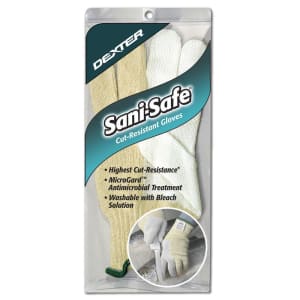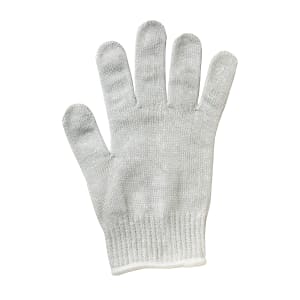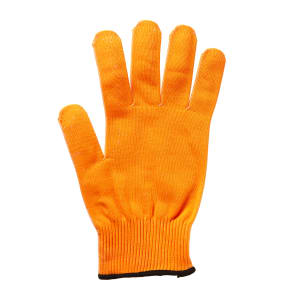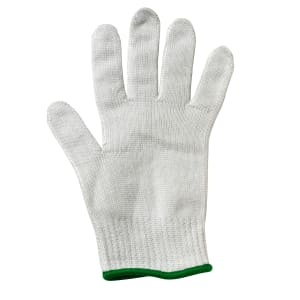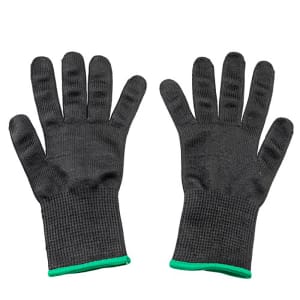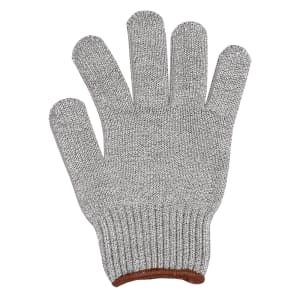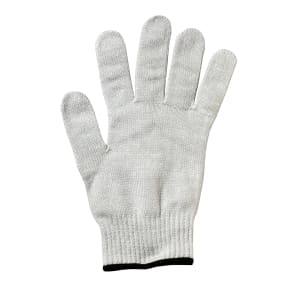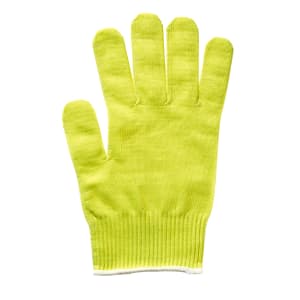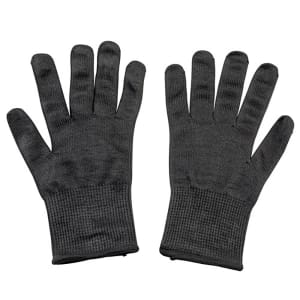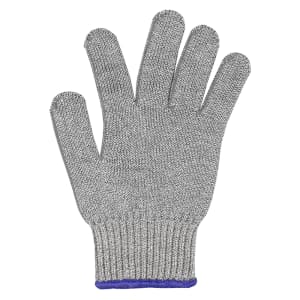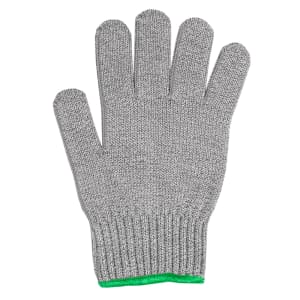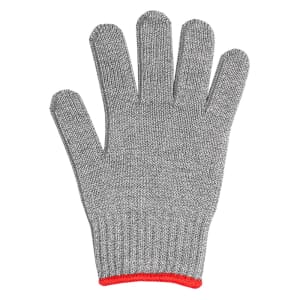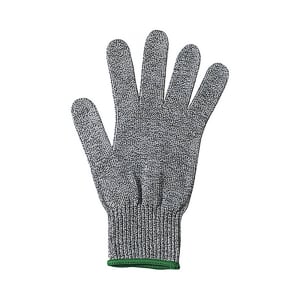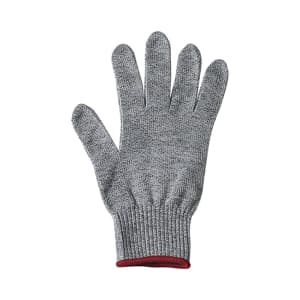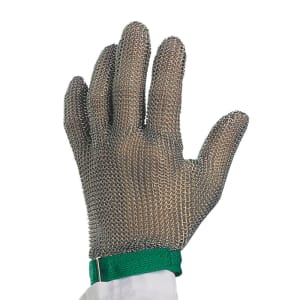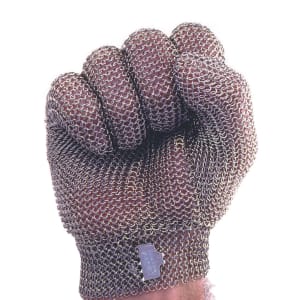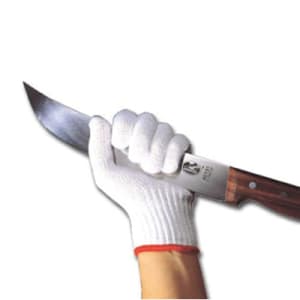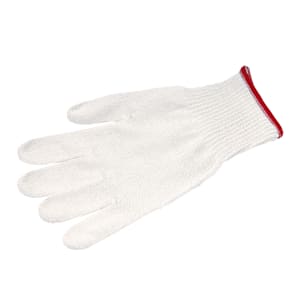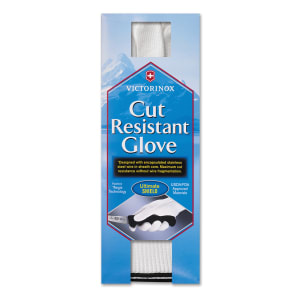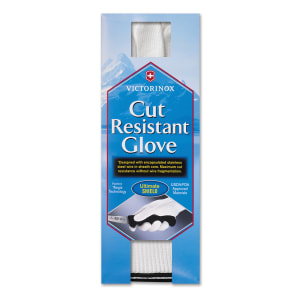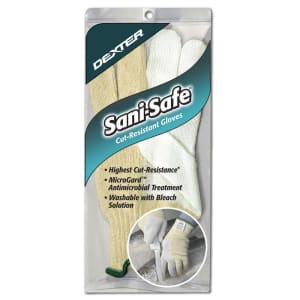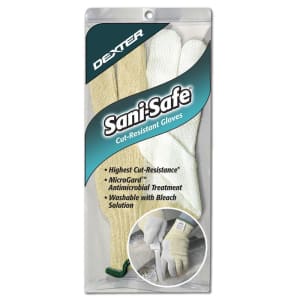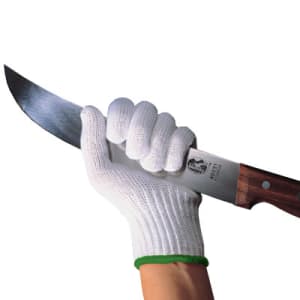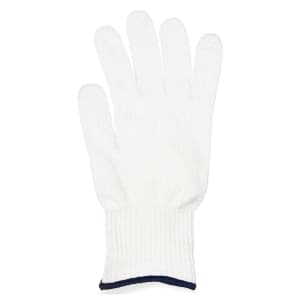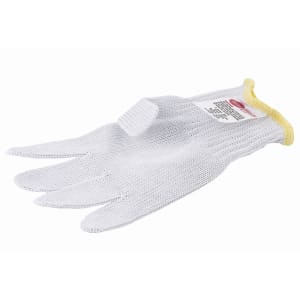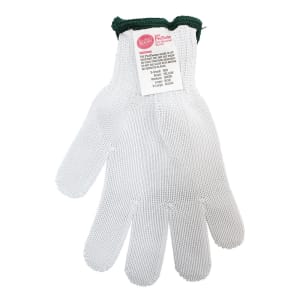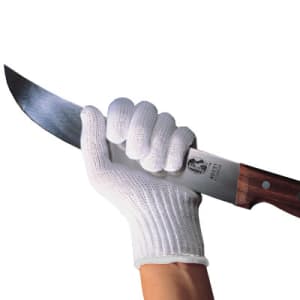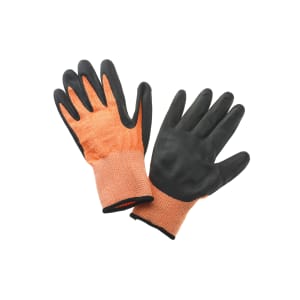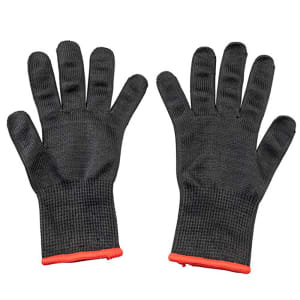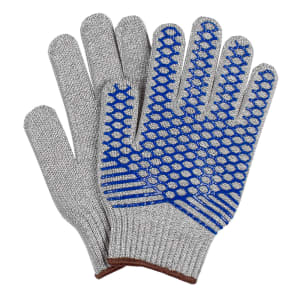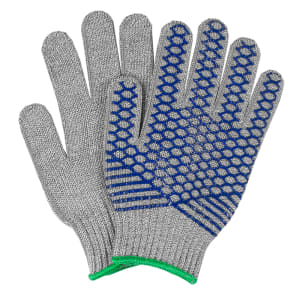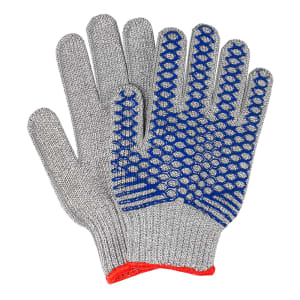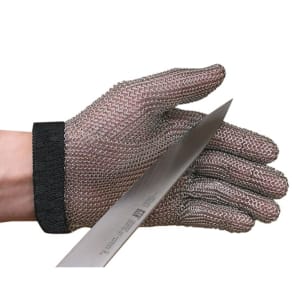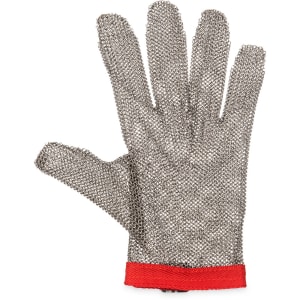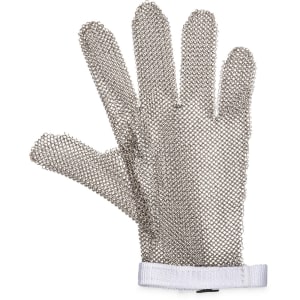Cut Resistant Gloves
Cut-resistant gloves protect users' hands from lacerations, preventing on-the-job accidents and avoiding trips to the emergency room. Cut with confidence by wearing protective gloves when slicing bread and deboning meat or fish. More
Kitchen Cutting Gloves: What You Need to Know
Kitchen cut-resistant gloves increase protection when handling sharp blades, cutting meat, or using a mandolin or food slicer. Hand cut injuries are prevalent especially in fast-paced kitchens, where employees often work with sharp tools on the fly. Cut injuries lose time, increase labor costs, and reduce efficiency, but can be minimized with the proper protective equipment.
Kitchen cutting gloves shield hands from sharp implements, enhancing employee confidence during cutting tasks and promoting increased productivity. Glove options are available in numerous styles and sizes, offering cut protection for light prep tasks as well as heavy-duty butchering applications.
Common Questions About Cut-resistant Gloves
How do cut-resistant gloves work?
Cut-resistant gloves combine strength, hardness, and rolling action to create cut resistance. Different blends of materials can be used in combination with these three properties to produce gloves with high dexterity, cut resistance, or temperature resistance.
Strength is determined by the inherent strength of the base material used to produce the yarn for protective gloves. Materials such as para-aramid and high-performance polyethylene often are used as the basis for cut-resistant glove yarn.
Hardness is provided by blending very hard elements such as steel or glass fibers into the yarn. Adding these types of materials helps to dull blades and slow cutting action, producing a higher level of cut resistance.
Rolling action occurs when filament fibers move loosely, absorbing the blade's motion and impact. These fibers encourage the blade to glide across the material's surface instead of slicing through.
What are cut resistance levels?
Cut resistance levels are the standard method of classifying a glove's cut resistance across all industries to help users determine which type of glove they need for each application.
There are nine ANSI cut resistance levels, with 1 indicating the lowest level of cut resistance and 9 representing maximum cut resistance. A glove's cut resistance level is determined by standardized testing that uses a specific machine to establish how much force is required to penetrate the glove with a sharp blade. The more force required to slice through a glove, the higher its cut level rating.
Gloves with higher cut level ratings sometimes can be bulky or limit finger mobility, so each cut resistance level has its own use. All cut-resistant gloves will hinder the user's dexterity to some extent, meaning there will always be a trade-off between reduced nimbleness and protection from potentially serious cut injuries. It's important to consider the type of cutting that will be performed with the glove to choose the best cut resistance level for each job.
What are cut-resistant gloves made of?
Cut-resistant gloves can be made of high-performance cloth, which often is blended with glass or steel for increased cut resistance. Sometimes a rubber coating is added to the finger or palm pads of cloth gloves to improve the user's grip.
These types of gloves are comfortable, enable a high level of dexterity, and offer some protection to heat and chill, but they offer low to moderate cut protection. Cloth styles are useful for applications where greater dexterity is required, if there is lower risk of cut injury, or where cut injuries likely are superficial if they occur.
Some butcher gloves are made of metal mesh to provide a much higher level of cut resistance, but they're not as comfortable to work with as cloth-based options and offer very little temperature resistance when working with hot or frozen food items.
What are chainmail cutting gloves used for?
Chainmail cutting gloves typically are made of stainless steel and are useful for heavy-duty applications where a cut injury likely is serious if it occurs. Metal mesh gloves offer a very high level of cut resistance and often are used for butchering meat and handling slicer blades. Made of thousands of individually formed metal rings, mesh butcher gloves function similarly to the chain mail armor worn by knights in the Middle Ages and are designed for maximum cut protection. Some metal butcher gloves extend to protect the user's forearms as well as hands, and metal mesh aprons can be purchased for greater protection in high-volume meat processing applications.
Even metal mesh gloves aren't meant to endure saw blades, however, and loose or ill-fitting gloves of all types run the danger of getting caught in moving machinery. It's important always to choose the right size of butcher gloves for your hands and use care when working with powered blades such as meat saws or slicers.
What cut-resistant gloves are food safe?
When shopping for kitchen cutting gloves, always choose gloves designed for foodservice use or buy from a supplier that specializes in foodservice products. Look for gloves that specify food-safe use or FDA compliance in the description and packaging.
Many kitchen cut-resistant gloves are designed with colored wrist bands so users can tell them apart, preventing cross contamination in color-coordinated systems, and some options feature antimicrobial enhancements to promote sanitary use.
When should I wear cut-resistant gloves in the kitchen?
Chef cutting gloves reduce the risk of lacerations when working with sharp blades and come in handy for many tasks, such as:
- Working with knives, mandolins, and graters
- Operating meat and vegetable slicers and choppers
- Shucking oysters
- Trimming and deboning cuts of meat
- Cleaning and handling slicer blades
How long do cut-resistant gloves last?
The lifespan of kitchen cutting gloves can vary widely depending on the tasks being performed with the gloves. Gloves should be inspected for cuts, holes, and frayed spots before every use and discarded if any damage is present.
Many cloth-based gloves can be laundered, but the type of soap and disinfectant that can be used is different for some glove materials. Using the wrong detergent or bleach can inhibit the gloves' cut resistance and shorten their lifespan. Always consult the gloves' packaging or contact the manufacturer before washing them to determine what kind of cleansers you can use.
After washing, gloves should be stored in a way that enables them to dry inside and out.

